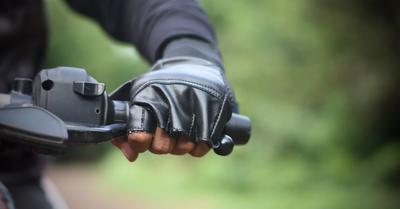Who Changes Motorcycle Tires?
As a member of the generations that changed their own bicycle tires, the skills can certainly translate to motorcycles. Sure, the wheels are bigger and heavier, and there are a few extra screws and bolts, but the principle remains the same. The only thing that’s truly different is the price of the tire set.
Motorcycle tires aren’t cheap, and if you’re aiming for a quality set, the price can rise up to and above $600 per set. And as someone who had damaged a few rubber hoops in his lifetime, I speak from experience when I say that that’s a pricey mistake. There are several ways you can have your bike tires changed, and I’ll cover each of them below in the order which seems most cost-effective.
Tire Dealerships
Retail tire dealerships are usually the best possible option when it comes to having the tires on your bike changed. The store’s main business is the storage and sale of new replacement tires to consumers, usually in the manufacturer’s packaging. This means that the tires aren’t mounted to the rims. However, most retail tire dealerships, if not all of them, have an adjacent shop that can change your tires.
This implies going to the dealership on your bike, purchasing the appropriate set, and having the dealership take care of mounting the new tires. In most cases, if you purchase the tires from the dealership, they’ll give you a discount on changing your tires. Some dealerships even offer a tire change for free, provided that they sold you the set.
Let’s assume that one of the tires on your bike has a pretty nasty slash, which means that the bike isn’t in a riding condition. Well, with a little know-how and not a small amount of elbow grease, you can remove the rims from the bike and take them to the dealership. The shop doesn’t actually need the bike to change the tires.
In fact, knowing how to detach your rims from the bike can help you save money even if the bike is in drivable condition. This way, the dealership technician won’t have to demount the wheels, which means they’ll have to charge you for just changing the tires.
Buying tires from a retail dealership and having them mount the tires on your bike is the best possible approach due to the following reason: accidents happen, and no matter how experienced you are, you can still end up damaging the tire. If this happens to a dealership technician/tire specialist, the dealership has to replace your tire at their own expense — which is significantly better than having to buy another set after you’ve damaged it yourself.
Tire Specialist Shop
While most rules that apply to dealerships apply to tire specialists as well, there are key distinctions between the two: the dealerships sell new sets almost exclusively and will always recommend you purchase a new set as they stand to make a profit. While this can happen at the tire specialist shop, most tire specialists will actually tell you that purchasing a used set can also be a viable option.
Of course, most professionals will recommend a new set, and you can buy one at all tire specialist shops. However, most tire specialists also offer used sets if you’re looking to pay less. These sets are usually inspected by technicians to establish whether they’re viable or not and sold officially for a fraction of the price.
Needless to say, you get what you pay for, and most tire specialists won’t offer any warranty on a used set — which is, in the end, pretty reasonable. They’ll also inspect your new or second-hand set if you bought them from a third-party seller, provided that the set is still viable. Generally speaking, tire specialist shops are more oriented toward selling and servicing tires rather than just selling tires like retail tire dealerships.
Car Repair Shops
Most car repair shops also offer to change the tires for their customers or even repair a flat, if viable, until you can purchase a replacement tire or set. Due to the similarities in the process and equipment used to change car tires, most car repair shops can also change the tires on your bike for a price. Keep in mind that changing the tires on your bike usually costs more than changing the tires on a car.
With that said, if you’re unsure whether your local car shop changes bike tires, your safest approach is to call them and ask before making the trip. If you don’t get a satisfactory answer, you can always ask them for directions to their favorite tire dealership, where you’re likely to find the service you’re looking for.
Change the Motorcycle Tires DIY
Changing the motorcycle tire DIY requires the use of the right technique since improper mounting can damage both the tire and the bike, which puts you at risk of an accident — which is why I recommended professional services in the first place. The upside of the DIY method is saving both time and money on professional services. However, the downsides are costly.
Even if you’re confident in changing the tires yourself, accidents happen — as previously stated — and you can end up damaging the tires. Needless to say, you’ll be the one covering the expenses of your mistake, which can easily set you back several hundred dollars. With that out of the way, here’s a quick guide on how to change the tires yourself:
- Unmount the wheels off your bike, but don’t forget to mark in which direction the wheels spin when riding;
- Let the air out of the tire by opening the valve using a valve tool. This loosens the pressure inside the tire and makes it easier to work with;
- Detach the tire bead (the inner edge) from the rim using the bead breaker until the bead breaks. Continue to separate the tire from all edges of the rim. You can spray some lubricants to help the tire bead come out;
- Pry the bead over the rim using two tire levers. Alternatively, you can use two larger flat-head screwdrivers to do this; just make sure not to chip or nick your rim;
- Pry out the tire entirely and remove it from the rim;
- Spray the inner walls of your new tire thoroughly with some spray lubricant to make it easier to work with, and place it onto the rim. Make sure that the spin directions of the rim and the tire match. Also, make sure that the valve marker matches the valve outlet hole on the rim;
- Pry one side of the tire onto the rim using tire levers. Once the first bead is in the rim, repeat the same with the other;
- Seal the tire bead into the rim using a tire tool. Don’t inflate your tires fully unless the tire bead is in place;
- Pump some ceramic dust into the tire to keep it more balanced. This has to be done before putting the valve stem back on.
- Reinsert the valve stem using the stem tool, and inflate your new tire to the recommended pressure.
- Mount the wheels back on your bike.
While seemingly simple, this process does require some knowledge and skill. If you’re purposefully looking to learn how to change the tires yourself, I suggest you either practice on an old and used-up pair or have someone experienced teach you how to do it.














